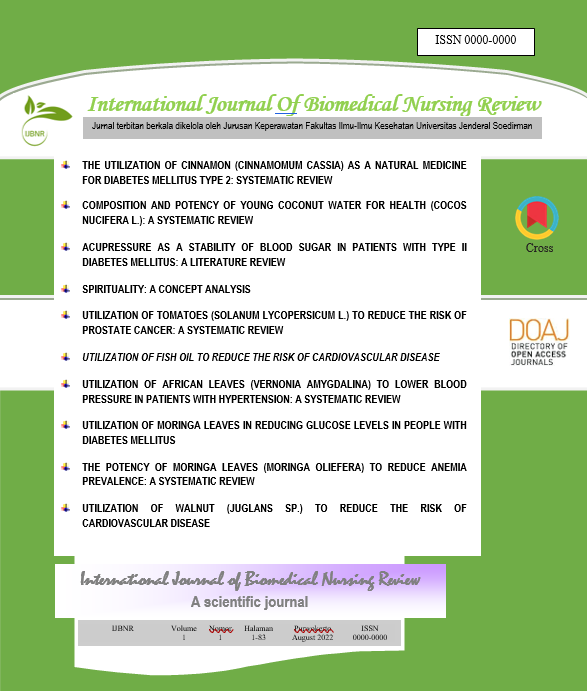SPIRITUALITY: A CONCEPT ANALYSIS
Abstract
Introduction: Defining spirituality as a separate concept from its relationship to religious aspects has created discourses among experts. Consequently, spiritual needs are commonly unidentified by nurses during their nursing assessment activity. Moreover, they tend to refer this problem to another professional.
Purposes: This study aims to clarify the concept of spirituality in the health context and to identify clear operational definition.
Methods: Eight-step Walker & Avant’s concept analysis approach was implemented. The eight steps of the approach are as follows: 1) selecting concept, 2) determining the aim of the analysis, 3) identifying all uses of the concept, 4) determining the defining attributes of the concept, 5) constructing a model case, 6) constructing additional cases, 7) identifying the antecedents and consequences of the concept, and 8) defining empirical referents. Selecting concept and determining aim of the analysis put in introduction.
Conclusion: Concept spirituality exist and different from religiosity; however, it will be beneficial to measure both religiosity and spirituality in the same situation.
References
Aten, J. D., Bennett, P. R., Hill, P. C., Davis, D., & Hook, J. N. (2012). Predictors of God concept and God control after Hurricane Katrina. Psychology of Religion and Spirituality, 4(3), 182-192. doi: 10.1037/a0027541
Avants, S. K., Marcotte, D., Arnold, R., & Margolin, A. (2003). Spiritual beliefs, world assumptions, and HIV risk behavior among heroin and cocaine users. Psychology of Addictive Behaviors, 17(2), 159-162. doi: 10.1037/0893-164X.17.2.159
Beer, A. M., Spanierman, L. B., Greene, J. C., & Todd, N. R. (2012). Counseling psychology trainees' perceptions of training and commitments to social justice. Journal of Counseling Psychology, 59(1), 120-133. doi: 10.1037/a0026325
Brelsford, G. M. (2011). Divine alliances to handle family conflict: Theistic mediation and triangulation in father–child relationships. Psychology of Religion and Spirituality, 3(4), 285-297. doi: 10.1037/a0021602
Capanna, C., Stratta, P., Collazzoni, A., & Rossi, A. (2013). Construct and concurrent validity of the Italian version of the Brief Multidimensional Measure of Religiousness/Spirituality. Psychology of Religion and Spirituality, 5(4), 316-324. doi: 10.1037/a0033642
Cooper, C., Katona, C., & Livingston, G. (2008). Validity and reliability of the brief COPE in carers of people with dementia: The LASER-AD study. Journal of Nervous and Mental Disease, 196(11), 838-843.
Cornish, M. A., Wade, N. G., & Post, B. C. (2012). Attending to religion and spirituality in group counseling: Counselors' perceptions and practices. Group Dynamics: Theory, Research, and Practice, 16(2), 122-137. doi: 10.1037/a0026663
Currier, J. M., Drescher, K. D., & Harris, J. I. (2014). Spiritual functioning among veterans seeking residential treatment for PTSD: A matched control group study. Spirituality in Clinical Practice, 1(1), 3-15. doi: 10.1037/scp0000004
Dierendonck, D. v., Garssen, B., & Visser, A. (2005). Burnout prevention through personal growth. International Journal of Stress Management, 12(1), 62-77. doi: 10.1037/1072-5245.12.1.62
Estanek, S. M. (2006). Redefining Spirituality: A New Discourse. College Student Journal, 40(2), 270-281.
Gall, T. L., Charbonneau, C., Clarke, N. H., Grant, K., Joseph, A., & Shouldice, L. (2005). Understanding the Nature and Role of Spirituality in Relation to Coping and Health: A Conceptual Framework. Canadian Psychology/Psychologie canadienne, 46(2), 88-104. doi: 10.1037/h0087008
Goeke-Morey, M. C., Taylor, L. K., Merrilees, C. E., Shirlow, P., & Cummings, E. M. (2014). Adolescents’ relationship with God and internalizing adjustment over time: The moderating role of maternal religious coping. Journal of Family Psychology, 28(6), 749-758. doi: 10.1037/a0037170
Greyson, B., & Khanna, S. (2014). Spiritual transformation after near-death experiences. Spirituality in Clinical Practice, 1(1), 43-55. doi: 10.1037/scp0000010
Hall, M. E. L., Oates, K. L. M., Anderson, T. L., & Willingham, M. M. (2012). Calling and conflict: The sanctification of work in working mothers. Psychology of Religion and Spirituality, 4(1), 71-83. doi: 10.1037/a0023191
Harris, S. T., Wong, D., & Musick, D. (2010). Spirituality and Well-Being Among Persons with Diabetes and Other Chronic Disabling Conditions: A Comprehensive Review. Journal of Complementary & Integrative Medicine, 7(1), 1-20.
Harris, S. T., Wong, D., & Musick, D. (2010). Spirituality and well-being among persons with diabetes and other chronic disabling conditions: a comprehensive review. Journal of Complementary & Integrative Medicine, 7(1), 21p. doi: 10.2202/1553-3840.1270
Hodge, D. R. (2003). Intrinsic Spirituality Scale.
Holden, J. M., Kinsey, L., & Moore, T. R. (2014). Disclosing near-death experiences to professional healthcare providers and nonprofessionals. Spirituality in Clinical Practice, 1(4), 278-287. doi: 10.1037/scp0000039
McBrien, B. (2006). Spirituality. A concept analysis of spirituality. British Journal of Nursing, 15(1), 42-45.
Ojeda, L., & Piña-Watson, B. (2013). Day laborers’ life satisfaction: The role of familismo, spirituality, work, health, and discrimination. Cultural Diversity and Ethnic Minority Psychology, 19(3), 270-278. doi: 10.1037/a0032961
Petrican, R., & Burris, C. T. (2012). Am I the stone? Overattribution of agency and religious orientation. Psychology of Religion and Spirituality, 4(4), 312-323. doi: 10.1037/a0027942
Piedmont, R. L., Ciarrochi, J. W., Dy-Liacco, G. S., & Williams, J. E. G. (2009). The empirical and conceptual value of the spiritual transcendence and religious involvement scales for personality research. Psychology of Religion and Spirituality, 1(3), 162-179. doi: 10.1037/a0015883
Reinert, K. G., & Koenig, H. G. (2013). Re-examining definitions of spirituality in nursing research. Journal of Advanced Nursing, 69(12), 2622-2634. doi: 10.1111/jan.12152
Rossetti, S. J., & Rhoades, C. J. (2013). Burnout in Catholic clergy: A predictive model using psychological and spiritual variables. Psychology of Religion and Spirituality, 5(4), 335-341. doi: 10.1037/a0033639
Sandage, S. J., & Jankowski, P. J. (2010). Forgiveness, spiritual instability, mental health symptoms, and well-being: Mediator effects of differentiation of self. Psychology of Religion and Spirituality, 2(3), 168-180. doi: 10.1037/a0019124
Stevens-Watkins, D., Sharma, S., Knighton, J. S., Oser, C. B., & Leukefeld, C. G. (2014). Examining cultural correlates of active coping among African American female trauma survivors. Psychological Trauma: Theory, Research, Practice, and Policy, 6(4), 328-336. doi: 10.1037/a0034116
Village, A. (2014). The relationship of psychological type to interpretations of Genesis among churchgoers in England. Psychology of Religion and Spirituality, 6(1), 72-82. doi: 10.1037/a0035184
Walker, L. O., & Avant, K. C. (2011). Strategies for Theory Construction in Nursing: Prentice Hall.








 Kampus keperawatan unsoed
Kampus keperawatan unsoed 

